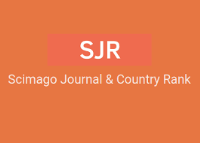Study of gene expression resistance in oilseed rape against Pythium root rot caused by Pythium spp. fungi
Аннотация
Background. Pythium root rot (PRR), caused by multiple Pythium spp., is one of the most significant root diseases affecting Brassica crops. The use of chemical pesticides against PRR is an inappropriate due to the associated health and environmental risks to humans. Therefore, employing biotic and abiotic resistance elicitors presents a successful alternative for managing PRR in Brassica napus.
Materials and methods. Bacillus subtilis, Chenopodium album water extract, Salicylic acid, and Ayzox fungicide were used to analyze their effects on resistance genes involved in responses of B. napus to PRR. Three genes associated with plant defense, the JA signaling marker (VSP2), the ET signaling marker (PR-4), and the SA signaling marker (PR-5)- were examined for gene expression by quantitative real time-polymerase chain reaction (qRT-PCR).
Results. The results showed that plants inoculated with biotic and abiotic elicitors exhibited a reduction in the damping off, and the symptoms in these plants were less severe compared to those plants that were not inoculated with elicitors and were infected with PRR. The results of qPCR demonstrated that the expression levels of the VSP2 and PR-4 genes increased in plants infected with Pythium spp., while the expression levels of the PR-5 gene increased in the leaves of plants treated with abiotic elicitors.
Conclusion. This study suggests that the biotic and abiotic elicitors used in the experiments are environmentally friendly agents and effective methods for protecting susceptible B. napus from Pythium spp.
EDN: HVQMQO
Скачивания
Литература
Ho, H.H. (2018). The Taxonomy and Biology of Phytophthora and Pythium. Journal of Bacteriology & Mycology: Open Access, 6, 40-45. https://doi.org/10.15406/jbmoa.2018.06.00174
van der Plaats-Niterink, A.J. (1981). Monograph of the Genus Pythium. Studies in Mycology, 21, 1-242. Available at: https://www.cabi.org/isc/abstract/19821379
Lodhi, A.M., Khanzada, M.A., Shahzad, S., & Ghaffar, A. Prevalence of Pythium aphanidermatum in Agro-ecosystem of Sindh province of Pakistan. Pakistan Journal of Botany, 45(2), 635-642.
Mohammadi, M., Smith, E.A., Stanghellini, M.E., & Kaundal, R. (2022). Insights into the Host Specificity of a New Oomycete Root Pathogen, Pythium brassicum P1: Whole Genome Sequencing and Comparative Analysis Reveals Contracted Regulation of Metabolism, Protein Families, and Distinct Pathogenicity Repertoire. International Journal of Molecular Sciences, 22(16): 9002. https://doi.org/10.3390/ijms22169002 EDN: https://elibrary.ru/nxmwfe
Khoshru, B., Mitra, D., Joshi, K., Adhikari, P., Rion, M.S.I., Fadiji, A.E., Alizadeh, M., Priyadarshini, A., Senapati, A., Sarikhani, M.R., Panneerselvam, P., Mohapatra, P.K.D., Sushkova, S., Minkina, T., & Keswani, C. (2023). Decrypting the multi-functional biological activators and inducers of defense responses against biotic stresses in plants. Heliyon, 9(3), e13825. https://doi.org/10.1016/j.heliyon.2023.e13825 EDN: https://elibrary.ru/uhrhdb
Alkooranee, J.T., Kadhum, N.N., Aledan, T.R., & Al farhan, I.M.H. (2017). Induced Systemic Resistance in Oilseed Rape by Some Bio-Elicitors Agents Against Rot Roots Diseases Caused by Rhizoctonia solani. International Journal of Pure and Applied Bioscience, 5(3), 1-9. https://doi.org/10.18782/2320-7051.2953
Alkooranee, J.T. (2020). Activity of Leaves and Root Extracts of Chenopodium album against Damping-off disease on Bread Wheat under Greenhouse Conditions. Plant Archives, 20(1), 1479-1482.
Alkooranee, J.T., Al-khshemawee, H.H., Al-badri, M.A.K., Al-srai, M.S., & Daweri, H.H. (2020). Antifungal activity and GC-MS detection of leaves and roots parts of Chenopodium album extract against some phytopathogenic fungi. Indian Journal of Agricultural Research, 54, 117-121.
Yu, Y., Gui, Y., Li, Z., Jiang, C., Guo, J., & Niu, D. (2022). Induced Systemic Resistance for Improving Plant Immunity by Beneficial Microbes. Plants (Basel), 11(3), 386. https://doi.org/10.3390/plants11030386 EDN: https://elibrary.ru/cvmmdo
Verhagen, B.W., Glazebrook, J., & Zhu, T. (2007). The transcriptome of rhizobacteria-induced systemic resistance in Arabidopsis. Molecular Plant-Microbe Interactions, 17, 895-908.
Spoel, S.H., Koornneef, A., & Claessens, S.M. (2003). NPR1 modulates cross-talk between salicylate- and jasmonate-dependent defense pathways through a novel function in the cytosol. Plant Cell, 15, 760-770.
Alkooranee, J.T., Yin, Y., Aledan, T.R., Jiang, Y., Lu, G., Wu, J., & Li, M. (2015). Systemic Resistance to Powdery Mildew in Brassica napus (AACC) and Raphanus alboglabra (RRCC) by Trichoderma harzianum TH12. PLoS ONE, 10(11), e0142177. https://doi.org/10.1371/journal.pone.0142177
Alkooranee, J.T., Aledan, T.R., Ali, A.K., Zhang, X., Wu, J., Fu, C., & Li, M. (2017). Detecting the Hormonal Pathways in Oilseed Rape behind Induced Systemic Resistance by Trichoderma harzianum TH12 to Sclerotinia sclerotiorum. PLoS ONE, 12(1), e0168850. https://doi.org/10.1371/journal.pone.0168850 EDN: https://elibrary.ru/yxmkmn
Abdul Malik, N.A., Kumar, I.S., & Nadarajah, K. (2020). Elicitor and Receptor Molecules: Orchestrators of Plant Defense and Immunity. International Journal of Molecular Sciences, 21, 963. https://doi.org/10.3390/ijms21030963 EDN: https://elibrary.ru/ixvxgs
Gomez, K.A., & Gomez, A.A. (1984). Statistical Procedures for Agricultural Research. 2nd Edition. John Wiley and Sons, Inc., London, pp. 13-175.
Mihajlović, M., Rekanović, E., Hrustić, J., Tanović, B., Potočnik, I., Stepanović, M., & Milijašević-Marčić, S. (2013). In Vitro and In Vivo Toxicity of Several Fungicides and Timorex Gold Biofungicide to P. aphanidermatum. Pesticides and Phytomedicine (Belgrade), 28(2), 117-123.
Ali, A., Javaid, A., & Shoaib, A. (2017). GC-MS Analysis and antifungal activity of methanolic root extract of Chenopodium album against Sclerotium rolfsii. Planta Daninha, 35, e017164713.
El-Mohamedy, R.S.R. (2012). Biological control of Pythium root rot of broccoli plants under greenhouse conditions. Journal of Agricultural Technology, 8(3), 1017-1028.
Mohamed, G.M., & Amer, S.M. (2014). Application of Salicylic acid and some fungicides as seed treatment for controlling damping-off and root rot disease of squash and cantaloupe plants under field conditions. Journal of Plant Protection and Pathology, 5(12), 1025-1043.
Ahmed, J.S., & Baker, R. (1987). Competitive saprophytic ability and cellulolytic activity of rhizosphere competent mutants of Trichoderma harzianum. Phytopathology, 77, 358-362.
Kojima, H., Hossain, M.M., Kubota, M., & Hyakumachi, M. (2013). Involvement of the salicylic acid signaling pathway in the systemic resistance induced in Arabidopsis by plant growth-promoting fungus Fusarium equiseti GF19-1. Journal of Oleo Science, 62(6), 415-426.
Ding, L.N., Li, Y.T., Wu, Y.Z., Li, T., Geng, R., Cao, J., Zhang, W., & Tan, X.L. (2022). Plant Disease Resistance-Related Signaling Pathways: Recent Progress and Future Prospects. International Journal of Molecular Sciences, 23(24), 16200. https://doi.org/10.3390/ijms232416200 EDN: https://elibrary.ru/xrahnv
Annapurna, K., Kumar, A., Kumar, L.V., Govindasamy, V., Bose, P., & Ramadoss, D. (2012). PGPR-Induced Systemic Resistance (ISR) in Plant Disease Management. Bacteria in Agrobiology: Disease Management, pp. 405-425.
Herms, S., Seehaus, K., Koehle, H., & Conrath, U. (2020). A Strobilurin Fungicide Enhances the Resistance of Tobacco against Tobacco Mosaic Virus and Pseudomonas syringae pvtabaci. Plant Physiology, 130(1), 120-127. https://doi.org/10.1104/pp.004432
Chitra, K., Ragupathi, K.N., Dhanalakshmi, P., Mareeshwari, N., Indra, A., Kamalakannan, A., Sankaralingam, & Rabindran, R. (2007). Salicylic Acid Induced Systemic Resistant on Peanut against Alternaria Alternata. Archives of Phytopathology and Plant Protection, 41(1), 50-56. https://doi.org/10.1080/03235400600655263
Radhakrishnan, N., & Balasubramanian, R. (2008). Salicylic acid induced defence responses in Curcuma longa (L.) against Pythium aphanidermatum infection. Crop Protection, 28(11), 974-979.
Molinari, S., Fanelli, E., & Leonetti, P. (2014). Expression of tomato salicylic acid (SA) responsive pathogenesis-related genes in Mi-1-mediated and SA-induced resistance to root-knot nematodes. Molecular Plant Pathology, 15(3), 255-264. https://doi.org/10.1111/mpp.12085 EDN: https://elibrary.ru/wqzblt
García-Gutiérrez, L., Zeriouh, H., Romero, D., Cubero, J., Vicente, A., & Pérez-García, A. (2013). The antagonistic strain Bacillus subtilis UMAF6639 also confers protection to melon plants against cucurbit powdery mildew by activation of jasmonate-and salicylic acid-dependent defence responses. Microbial Biotechnology, 6(3), 264-274. https://doi.org/10.1111/1751-7915.12028
Просмотров аннотации: 145
Copyright (c) 2025 Jawadayn Talib Alkooranee

Это произведение доступно по лицензии Creative Commons «Attribution-NonCommercial-NoDerivatives» («Атрибуция — Некоммерческое использование — Без производных произведений») 4.0 Всемирная.

























































